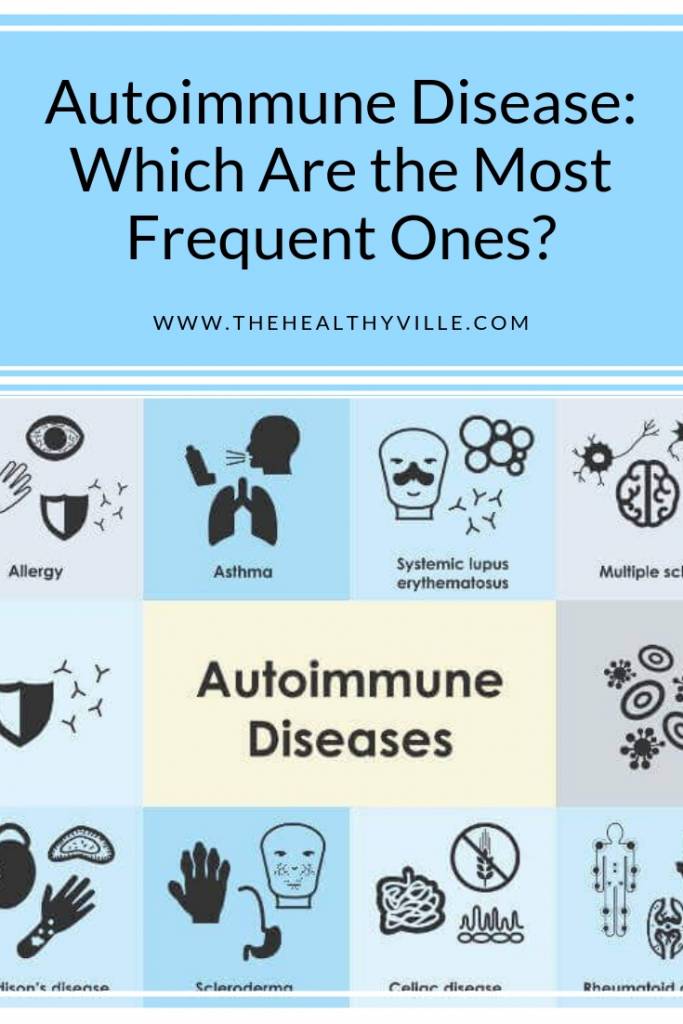An autoimmune disease can be quite difficult to treat. Find out which the most frequent ones are and what to do about them.
Autoimmune diseases are those in which our immune system mistakenly attacks tissues and structures of our body. There are more than 50 diseases and below, we will tell you all about the most frequent ones.
An autoimmune disease develops when our own immune system attacks our cells and tissues. Our body does not recognize them as their own and destroys them as if they were strangers.
The immune system consists of several organs and cells, whose mission is to defend our body against infections, certain diseases and foreign substances.
The cause why the immune system attacks structures of our own body is not familiar in detail. In some cases, doctors think that it occurs due to exposure to certain microorganisms, such as viruses or bacteria, or to environmental factors in people who have a genetic predisposition.
More than 50 autoimmune diseases are known and, although each disease is different, the poor function of the immune system is common in all. In addition, the symptoms of most autoimmune diseases have common aspects such as fatigue, dizziness, discomfort and low-grade fever.
Next we will see in more detail the most frequent autoimmune diseases:
- Rheumatoid arthritis
- Systemic lupus erythematosus
- Type I diabetes
- Multiple sclerosis
However, before going into detail we will talk a little about the prevention of this type of diseases.
How to prevent an autoimmune disease?
These are complex diseases, in which, sometimes, it is difficult to clarify the cause by the number of factors that can influence its appearance.
In the case of autoimmune diseases, it is difficult to talk about promotion and prevention, because the origin of this type of disorders has not even been clarified.
However, we know that many of them arise after the combination of a genetic predisposition with environmental factors. Therefore, we can talk about certain care or prevention strategies associated with this type of diseases.
Some of these measures are:
- Childhood infections: Infections during early childhood confer protection against autoimmune disorders. Of course, the infection should not be sought intentionally, but it is also true that hygiene care should not be maximized.
- Diet: it is essential for prevention and treatment, because good eating habits will help to have the body in the most optimal state of health possible.
- Physical exercise: like the previous one, a better prepared and fit body will better deal with the symptoms of any disease, including autoimmune diseases.
- Supplements: Probiotics, such as Lactobacillus, are a protective factor. When pregnant women with dermatitis and their newborns take them, there’s incidence of diseases in the child.
- Unhealthy habits: moving away from alcohol, tobacco or other drugs, as well as avoiding sedentary lifestyle and junk food, will provide us with an adequate state of health. In many cases, these types of habits can be the triggers.
Autoimmune disease: The most frequent types
Rheumatoid arthritis
In this case, the immune system attacks certain tissues of the joints, although it can transfer to other tissues of greater severity.
This autoimmune disease is a chronic and degenerative disease that is characterized by causing inflammation of the synovial membrane of the joints and surrounding tissues. As in most cases, it affects women more than men.
The synovial membrane is the membrane that feeds, protects and covers the cartilage.
In some cases, rheumatoid arthritis can damage organs and systems such as the heart, kidney and lung. Therefore, it is also a systemic disease.
Read more: 4 Alternative Rheumatoid Arthritis Treatment Solutions To Choose From!
Systemic lupus erythematosus
As its name suggests, in addition to being an autoimmune disease, it is a systemic disease. This means that it can affect many organs such as the skin, joints, kidneys, heart, etc. It is a chronic disease that affects mostly women and usually begins in youth.
However, half of patients suffering from lupus have an almost exclusive involvement of the skin and joints. Thus, the disease frequently exhibits erythema in the shape of butterfly wings on the nose and on the cheeks.
Type I diabetes
Lacking beta cells, patients with type I diabetes rely solely on insulin administration.
Type I diabetes mellitus is a disease that, in addition to being autoimmune, is a metabolic disease and is characterized by selective destruction of the pancreatic beta cells.
Beta cells are responsible for the synthesis of insulin, so when being destroyed, there is a deficiency of this hormone. It can develop at any age, although it is diagnosed more frequently in children, adolescents and young adults.
Multiple sclerosis
In the central nervous system (CNS) there are two main parts: the brain and the spinal cord. Wrapping and protecting the nervous fibers of the CNS is a material called myelin. Myelin facilitates the conduction of electrical impulses between the nerve fibers.
Multiple sclerosis causes loss of myelin in many areas. Therefore, the ability of the nerves to conduct electrical impulses is interrupted. The immune system can attack neurons from different parts, developing different symptoms depending on the part involved.
Don’t forget to SHARE the autoimmune disease list with your friends and family on your social networks!

